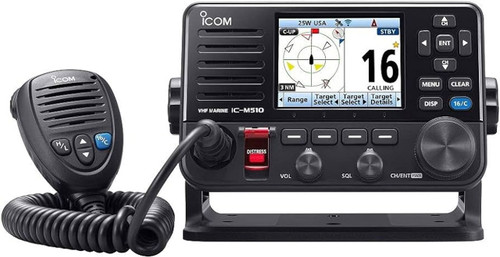A Guide to VHF Radios for Mariners
Navigating the high seas, whether you're a seasoned sailor or a beginner, requires more than just a keen sense of direction and a trusty vessel. Communication is key to ensuring safety, coordinating with other vessels, and receiving vital information about weather conditions and emergencies. In the world of maritime communication, one tool stands out as the backbone of marine safety and coordination: the VHF radio.
In this comprehensive guide, we'll explore the ins and outs of VHF radios, from their fundamental functions to the latest innovations. Whether you're a mariner looking to brush up on your knowledge or a novice just setting sail, this guide will equip you with the essential information you need to make the most of this critical piece of equipment.
Chapter 1: The Basics of VHF Radios
We'll start at the beginning, covering the fundamentals of VHF (Very High Frequency) radios. What are they, and how do they work? You'll gain insights into the technology that keeps mariners connected on the open water.
Chapter 2: Why Mariners Rely on VHF Radios
Discover why VHF radios are the go-to communication tool for mariners. From their range and reliability to their dedicated maritime frequencies, we'll delve into the reasons VHF radios are a must-have for anyone at sea.
Chapter 3: Understanding VHF Channels
Communication on the water involves more than just tuning in to a single frequency. We'll explain VHF channels, their significance, and how to use them effectively to connect with other vessels and shore stations.
Chapter 4: VHF Radio Etiquette and Procedures
Just as on land, there are certain protocols and etiquette to follow when using VHF radios. Learn the do's and don'ts of maritime radio communication, ensuring smooth and respectful interactions with fellow mariners.
Chapter 5: Selecting the Right VHF Radio
When it comes to choosing a VHF radio for your vessel, you'll be presented with various options. We'll guide you through the considerations, such as fixed-mount vs. handheld units, features to look for, and how to ensure your radio meets legal requirements.
Chapter 6: Operating Your VHF Radio
Now that you have your VHF radio, it's time to learn how to use it. We'll cover the basics of radio operation, including making calls, sending distress signals, and setting up your radio for optimal performance.
Chapter 7: Safety and Emergency Procedures
Safety is paramount at sea, and your VHF radio plays a vital role in emergencies. We'll walk you through distress calls, the importance of the DSC (Digital Selective Calling) feature, and how to seek assistance when needed.
Chapter 8: VHF Radios and Modern Technology
Maritime technology is continually evolving. In this chapter, we'll explore how VHF radios are adapting to the digital age, including integrated GPS, AIS (Automatic Identification System), and other innovative features.
Chapter 9: Maintenance and Care
Just like any piece of equipment, VHF radios require regular maintenance to ensure they function optimally. We'll provide guidance on how to keep your radio in excellent working condition.
Chapter 10: The Future of VHF Radios
As technology advances, so do VHF radios. We'll take a peek into the future of maritime communication, exploring potential developments and how they may impact mariners.
By the end of this guide, you'll have a comprehensive understanding of VHF radios and their role in maritime safety and communication. Whether you're a sailor, fisherman, or simply a maritime enthusiast, this knowledge will enhance your experience and keep you connected on the water.
Stay tuned for this informative journey through the world of VHF radios, and equip yourself with the tools to navigate the seas with confidence and security.

